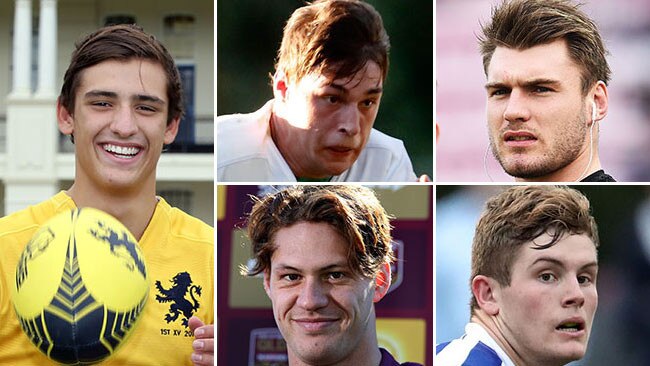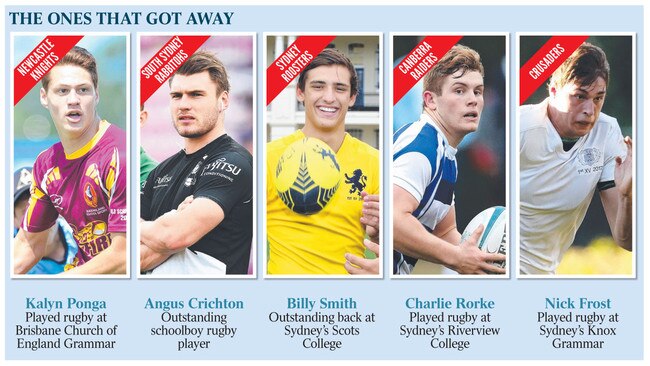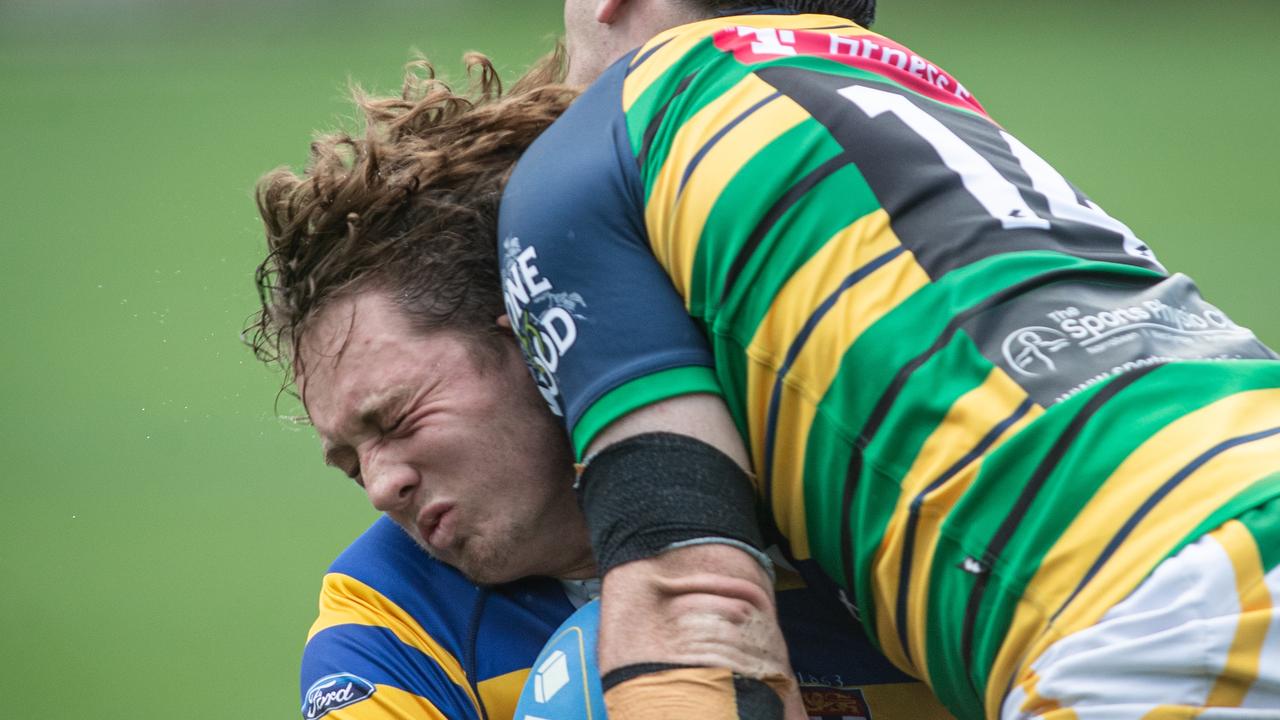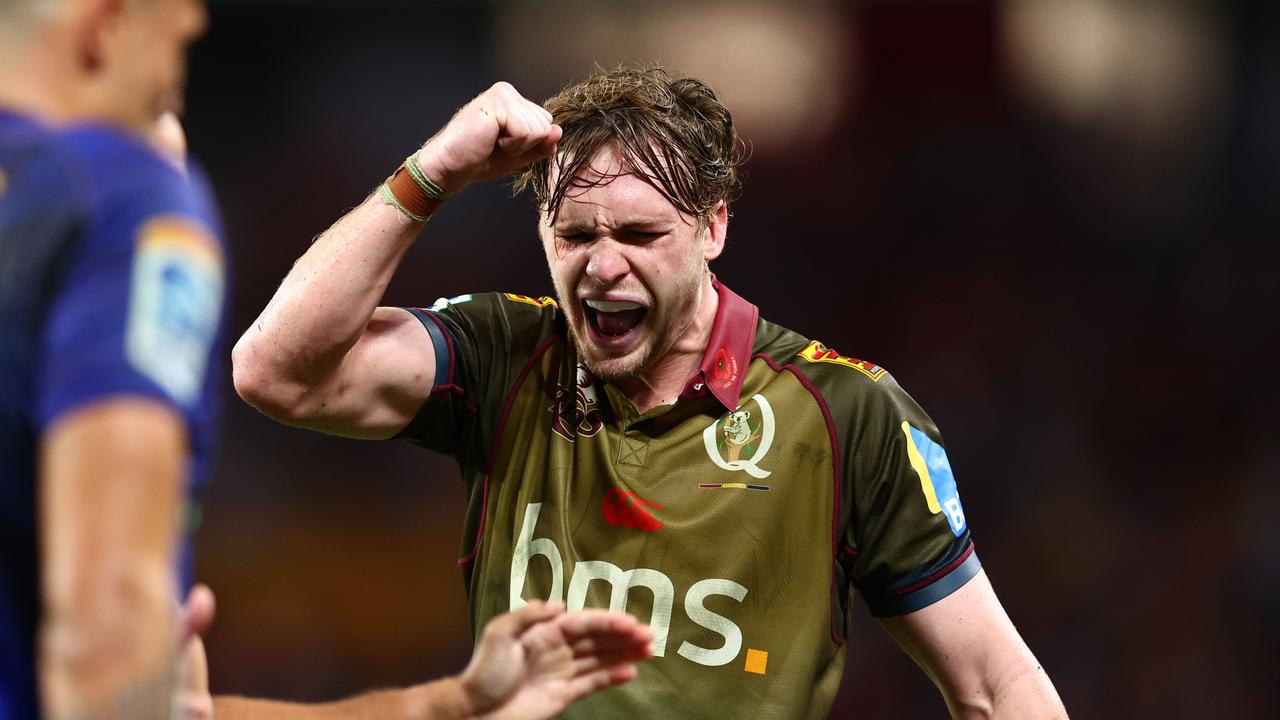Young rugby players are voting with their feet
Go to any major rugby nursery, a school, and where once we saw rugby goalposts there are now AFL posts and soccer goals.

It was a more than interesting weekend on the international rugby front. The All Blacks were anything but impressive against a 14-strong French side. The decision to send off one of the French players mystified even the New Zealand supporters.
And, as I warned a couple of weeks ago, the dramas continue in South Africa for Eddie Jones.
England finished fifth in the Six Nations, their worst-ever result, and then were smashed by the Barbarians 63-45. They’ve now lost the first two Test matches to South Africa — six losses on the trot, England’s worst run since 2007. Eddie Jones is under siege.
Then, as I suggested, the victory against Ireland by Australia in the first Test was most probably a false dawn. Ireland didn’t play their full-strength side and paid the price for taking the Australian team for granted.
Make no mistake about it, this Australian team are capable of striking. But they didn’t in Melbourne. Far too many mistakes. And there are real problems at the back of the lineout if we play without height.
Kurtley Beale was again, in the Melbourne Test, at his brilliant best. But the game, unfortunately, was riddled with errors.
To be competitive, above all else, we have to focus on this problem that is loosely called “turnovers”. I hate the word.
It is about surrendering the ball to the opposition. The ball is the bank. We surrendered the ball 12 times in the first Test. We improved in the second — six.
But then we dropped off the tackles — 34 missed tackles in Melbourne, almost double that of Brisbane.
We can win the deciding Test tomorrow, but not if we concentrate our ball usage around the ruck. The more people on the ground, the less chance we’ve got. And that means maul ball should be preferred to ruck ball to drag in the opposition forwards and release people such as Beale and Israel Folau.

But after Saturday, comes Sunday and it’s rugby league’s State of Origin.
Much has been made of Kalyn Ponga, his father a New Zealander, his mother an Australian. He makes his State of Origin debut.
The rugby league world are raving about him; rugby fans weep. He played rugby for Churchie in Brisbane.
The Queensland Reds wanted him. Why did he sign with North Queensland Cowboys?
I’ve written about this before. If we can’t keep our best young players, we’re in trouble.
In the NRL, South Sydney are being discussed as a real premiership chance. One of their stars, Angus Crichton, an outstanding rugby schoolboy, was abandoned by the hopeless schoolboy rugby system. The best schoolboy back since Ponga is Billy Smith from Scots College. He’s gone to the Sydney Roosters.
The brilliant Charlie Rorke, from Riverview College, has gone to the Canberra Raiders.
Nick Frost from Sydney’s Knox Grammar, the son of a prominent employee of Rugby Australia, has taken up a contract with the New Zealand Crusaders.
Young players are voting with their feet. And Rugby Australia CEO Raelene Castle, I’m sorry, has no knowledge and no ability to contribute to the solution of this problem. Which brings us to the grassroots of the game.
Remember, the Western Force were wound up and told their players would move into other franchises and thereby strengthen our Super Rugby teams. That hasn’t happened.
The money saved, we were told, would be spent on grassroots. That hasn’t happened.
Look at the 2017 annual report. Rugby Australia says it generated $150 million of income last year. Why did it spend only $3.7m on community rugby, when clearly the grassroots is the future of our game?
According to its own report, it spent $17m on corporate salaries, more than four times what it spent on grassroots rugby.
It spent $38m on Super Rugby, 10 times what it spent on grassroots rugby.
It spent $25m on player payments, more than six times what it spent on grassroots rugby.
It spent $8m on high performance and produced no high performance, but that’s more than twice what it spent on grassroots rugby.
It spent $4.3m on marketing, more than what it spent on grassroots rugby.
And if you believe it own participation numbers from 2017, it says 271,922 people played rugby in Australia last season.
If you share the $3.7m among these grassroots participants, it works out at $13 per grassroots player — the same grassroots players who have to pay a registration fee that includes a $50 kickback to the parent body, Rugby Australia.
Can it get any worse?
And though I’ve been writing about this for months, nothing has been done to address any of these issues.
Members of the board run around telling everyone that rugby is in good shape. But the grassroots player gives Rugby Australia $50 and Rugby Australia spends, in return, $13 per player on grassroots.
It’s no wonder those in club rugby are fed up, because club rugby is doing a terrific job against the odds. Suburban rugby is strong against the odds. No thanks to Rugby Australia.
The former CEO, Bill Pulver, once said he wouldn’t give the clubs any money because they would “piss it up against the wall”.
Well, to those in club land, it’s Rugby Australia that is pissing away the future of our great game.
The AFL has set aside $253m for investment in its grassroots and community game this year. That’s about 70 times what rugby spent last year.
Perhaps that’s why the AFL has 1.5 million participants, almost six times the number that play rugby.
Which begs the question, why didn’t the board of Rugby Australia headhunt a CEO from the AFL instead of recruiting a former failed rugby league CEO who knows nothing about the game?
If our game is to survive, we don’t have to look very far to learn how to grow the game. Have a look at what the AFL is doing.
Its participation numbers are up by more than 10 per cent and it is pumping resources into the grassroots.
Go to any major rugby nursery, a school, where I used to coach, and where once we saw rugby goalposts everywhere, there are now AFL posts and soccer goals.
When you consider all of this, can someone on the board of Rugby Australia explain how Cameron Clyne, who’s supposed to be the chairman, can turn away Andrew Forrest, when he was promising to pump $50m into Australian rugby.
Why would the chairman of an almost-broke organisation turn away a potential saviour and investment whale such as Andrew Forrest?
Forrest is still seeking answers, as are we all.
But, as usual, those sitting in their leather chairs in the brand new Rugby Australia headquarters are saying nothing. They are hoping it will go away and they can continue to enjoy their five-star hotel trips to Europe every November with the Wallabies.
How these people can get away with these perks while the grassroots game gets next to nothing is beyond explanation.
Which brings us back to one of the central problems — the judgment of those in charge.
What flawed judgment dissolved the Western Force? What flawed judgment showed Forrest the door? What flawed judgment persists with an unworkable and unaffordable SANZAAR model?
And what flawed judgment could contemplate bringing Eddie Jones back into Australian rugby, as was being floated only weeks ago.
The last time Jones coached for an Australian team, he was “coaching” the Queensland Reds, if you use the word loosely. It was May 2007.
Queensland were beaten by the Bulls in South Africa 92-3, which remains a record-winning margin in Super Rugby.
Yet only weeks ago, Rod Kafer, supposed to be the head of coaches when he’s barely coached himself, wants to bring Jones back after the World Cup next year.
It may seem unkind, but it has to be said, Kafer doesn’t know a thing about developing successful coaches.
But in another appalling exercise in judgment, he’s the apparent saviour of Australian coaching.
What’s to be done?
Well, try four things immediately.
Headhunt a CEO from the AFL with a proven track record for growing a football code.
Get rid of Clyne and replace him as chairman with someone who can make peace with Forrest. And Clyne should take the rest of the board with him. If the standards of the corporate world were to prevail in Rugby Australia, they’d all be sacked by the shareholders.
Sign up someone, and there are plenty of excellent candidates, to mentor our young rugby coaches, including our rookie Super Rugby coaches.
And find the money to spend on the grassroots if we are dedicated to making sure the game has a future.
The tragedy is, time is running out. It’s five minutes to midnight. Crowds are down, revenue is down, the public’s faith in the blazer brigade has evaporated.
Or do we wait until the rugby house has burnt down completely before we start the job of necessary repair?




To join the conversation, please log in. Don't have an account? Register
Join the conversation, you are commenting as Logout